North County Honor Flight #52 Military Biographies – WWII to Dessert Storm
May 18, 2024 – U.S. Oval, Veterans Park, Plattsburgh, NY, Send-Off Ceremony
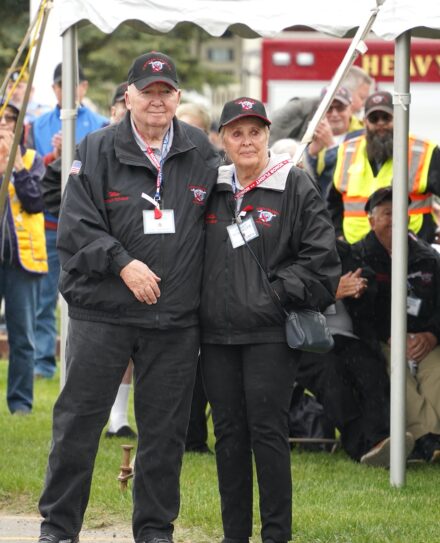 Winfried Belanger, U.S. Air Force, 1960-1990 – Vietnam
Winfried Belanger, U.S. Air Force, 1960-1990 – Vietnam
Trained as an Avionics Repairman, Win was the guy who could fix anything that was broken. Flying from Langley Air Force Base, two KB-50, 4-engine aerial refueling tankers headed to the Azores. Flight “Tyler 41,” with 8 crew members, disappeared in the Bermuda Triangle. Win was on the sister ship searching for the lost plane. Fuel was running out, forcing a landing in the Azores. The crew was lost.
Win was assigned to Tan Son Knute Air Force Base. In a bar, Win and a friend, Ed, took drinks upstairs. A massacre killed everyone on the first floor. Win and Ed ran out before the Vietnamese Police arrived. Returning stateside, Win gained a reputation of “Belanger is coming, the base is closing”. Win received several medals and commendations for his 30 years of service to our country and 100 days of service. May 18th is Win and Polly’s 62nd anniversary.
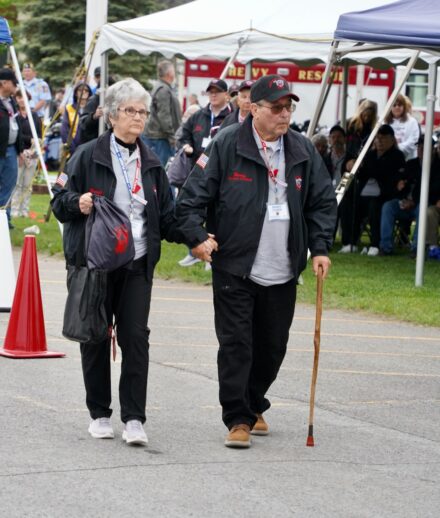 Barry Clark, U.S. Air Force, 1965-1969 – Vietnam
Barry Clark, U.S. Air Force, 1965-1969 – Vietnam
After basic and AIT training at Lackland Air Force Base, Barry was home on leave when his grandmother passed. Barry was assigned to Missile Security and ordered to Grand Forks Air Force Base, North Dakota, for three long, cold years. When an alarm went off, Barry was called to one of thirty minuteman missile sites. Barry was in the field three days in a 30-degree blizzard, a hundred miles out with no heat in the vehicles, walking from the second floor on snowbanks to get to the mess hall.
Barry was assigned to warm weather at Johnson Island Air Force Base, on a mile-long, ½ mile-wide island 100 miles south of Hawaii. Home to the Atlas Missile Site, our troops fired missiles every so often to let the Soviets know they were there.
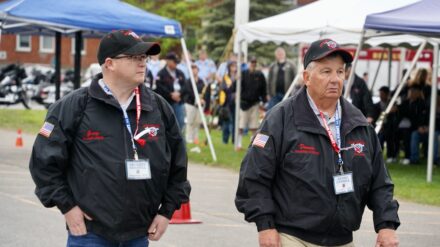 Dennis Connell, U.S. Navy, 1969-1973 – Vietnam
Dennis Connell, U.S. Navy, 1969-1973 – Vietnam
At Great Lakes Naval Station, Dennis trained as a radarman, sea school, and electronic warfare operations.
The USS Intrepid Aircraft Carrier deployed in the North Atlantic and Mediterranean. 100 miles from shore, it encountered a hurricane path and arrived on shore a week later with a million dollars in damage.
The Secretary of the Navy presented Dennis with the Navy Achievement Medal for his professional achievements and superior performance while serving as an Electronic Warfare Operator in the Combat Information Center of USS Intrepid. Dennis’s early detection, reporting, and recording of emitters enabled the USS Intrepid to complete an outstanding list of Electronic Warfare recordings and reports. His efforts contributed significantly to the successful accomplishments of antisubmarine warfare operations and vital national and NATO importance. Dennis joined the Navy to see the world and traveled to 14 countries.
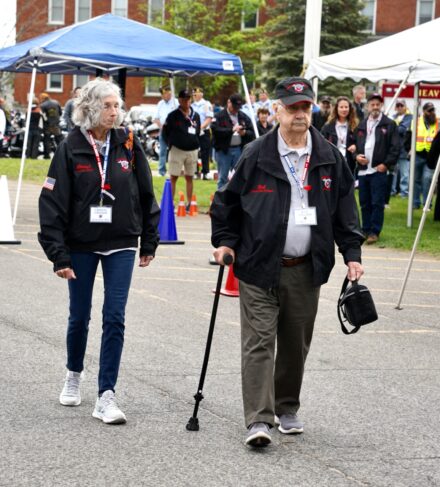 Robert Cronin, U.S. Army, 1953-1956 – Korean
Robert Cronin, U.S. Army, 1953-1956 – Korean
In high school, Bob joined the National Guard for one year and twenty months. After graduating, Bob enlisted in the Army. After training, Bob was stationed in Chin Chon, Korea, for 17 months. In Korea, Bob served with the 388th Engineer Pipeline Company. The ships piped fuel into the tanks, providing jet fuel at airbases. Bob said troops seldom left the compound due to the dangerous surroundings.
Returning stateside, Bob completed his military service with the Airborne Division at Fort Bragg.
When asked about his worst experience in Korea, Bob said it was watching the people live in extreme poverty. When asked about his best experience, Bob said there was none. He just did the best he could. Bob and his wife Phyliss have been happily married for 64 years.
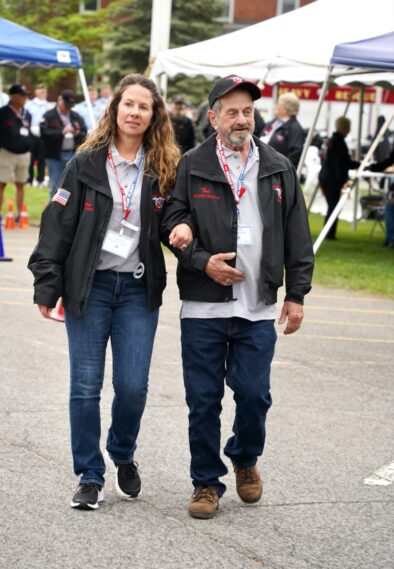 Theodore Ginett, U.S. Navy, 1965-1971 – Vietnam
Theodore Ginett, U.S. Navy, 1965-1971 – Vietnam
Ted enlisted in the Navy to train at the Great Lakes Naval Station to avoid the draft. Ted boarded the USS Bradley and was assigned to Radio Operations, section leader, watch supervisor, and duty master-at-arms.
The USS Bradley began gun-fire support along the coast of South Vietnam and carrier escort duty in the Gulf of Tonkin. Before going to Southeast Asia, it was diverted to the Sea of Japan in response to the capture of the USS Pueblo. The final tour resumed escort and gunfire support, firing 3,247 rounds in 10 days from 5”/38 guns.
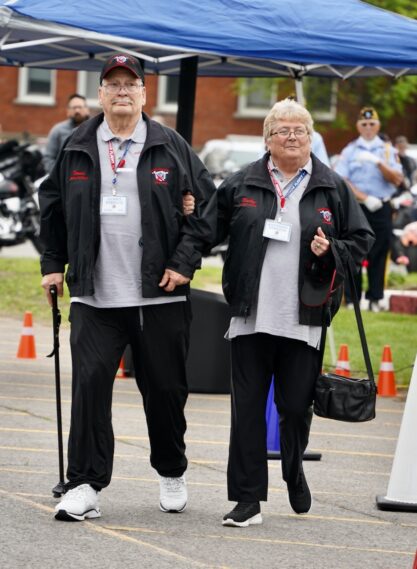 Dennis Harrsch, U.S. Marine Corps, 1967-1971 – Vietnam
Dennis Harrsch, U.S. Marine Corps, 1967-1971 – Vietnam
Dennis completed training at Parris Island and Camp Lejeune. With AIT training, Dennis was assigned to Aircraft Electronics.
Dennis was sent to Cherry Point and then deployed to Vietnam. Dennis landed in Da Nang at the start of the Tet Offensive.
Dennis was ordered to return from leave as a critical MOS for recovery duty. Upon return, qualified M60 Dennis was diverted to Monkey Mountain as a door gunner. Dennis had some very close calls in areas of intense action. For his service to our country, Dennis received many awards.
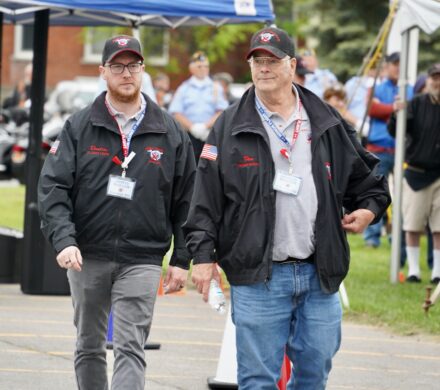 Donald Norton, U.S. Air Force, 1971-1978 – Vietnam
Donald Norton, U.S. Air Force, 1971-1978 – Vietnam
With a draft number of 55, the Navy recruiter would not guarantee Don submarine duty, so he joined the Air Force. Don completed basic training at Lackland Air Force Base and AIT at Chanute Air Force Base assigned as a Fuel Specialist.
Don served 12 months in Vietnam and completed a 45-day TDY in Thailand before returning stateside to Eglin Air Force Base. After being reassigned to Plattsburgh Air Force Base, Don asked a friend where it was. He said, “Get a map, find Albany, and keep going north.” Don’s final four years were in Plattsburgh.
Don was “Proud to Serve,” but he doesn’t share his military service. A highlight was meeting Bob Hope.
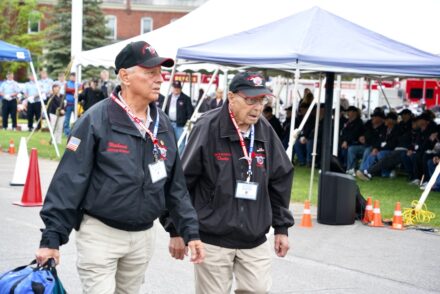 John Smith, U.S. Army, 1943-1945 – World War II
John Smith, U.S. Army, 1943-1945 – World War II
Dusty trained in Utica, Fort Niagara, and Atlantic City, including gas masks and sand running. Sent to Tampa, Dusty worked in supply, issuing clothing. Dusty traveled by box car to Santa Barbara, California, training as a radar operator, a skill he quickly mastered and enjoyed. Dusty was Sent to Virginia aboard a crowded ship for 28 days, eating meals on their bunks or deck. The ship landed in Naples, Italy, Mount Vesuvius erupted, and they were bombed every night. Leaving Italy, Dusty traveled to France where he met up with his brother-in-law and a Merchant Marine from Lake Placid. Sent to Germany, Dusty was nearby when Himmler was arrested. Returning stateside, Dusty left the service on Pearl Harbor Day. On June 14, Dusty will turn 101.
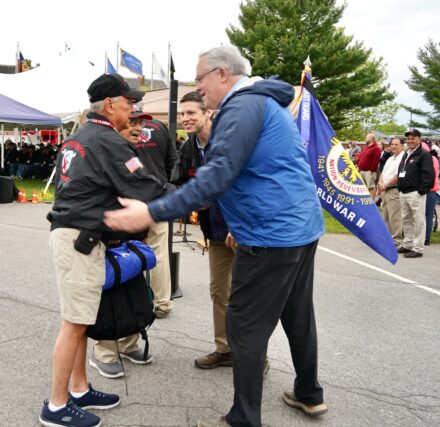 Richard Smith, Veteran Guardian for his Father, U.S. Army 1970-1973 – Vietnam
Richard Smith, Veteran Guardian for his Father, U.S. Army 1970-1973 – Vietnam
Richard was drafted and sent to Fort Gordon. Because of a broken kneecap, Richard was asked if he could type, so he quickly learned to type. Being sent to Vietnam, a quick trip home to see his pregnant wife, Richard went to California, Guam, and Cam Ranh Bay. With no food for 25 hours, Richard ate the best liver and onions.
With his mechanical background, Richard worked on helicopters; the constant noise resulted in hearing loss.
Not the only Ricard Smith in 1st Company, Richard had no guard duty for a few months. Richard made money by pulling guard duty for others for $20 -$40.
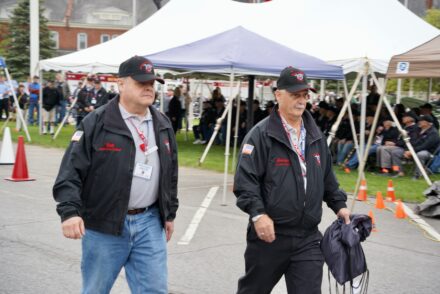 William Smith, U.S. Army, 1970-1996 – Desert Storm
William Smith, U.S. Army, 1970-1996 – Desert Storm
Bill completed basic and AIT training at Fort Polk and was assigned as an Infantry Mortarman. Bill completed his education at the Empire State Military Academy as an officer candidate.
Called to active duty for the Lake Placid Olympics, Bill was responsible for medical missions, transportation, and athlete security to ensure the safety of the Lake Placid Olympics. About 1,400 guardsmen deployed to pitch heavy battlefield tents and create heated areas. Within 24 hours of the Olympic Committee’s request, all logistics were in place, and essential equipment was gathered. Called back to active duty for Desert Storm, Bill’s unit was ready to be deployed but would remain on standby.
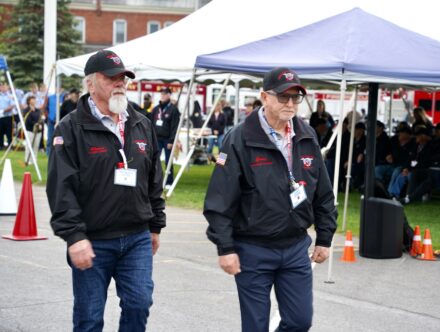 Gary Stark, U.S. Marine Corps, 1968-1970 – Vietnam
Gary Stark, U.S. Marine Corps, 1968-1970 – Vietnam
Gary quit college and traveled to Connecticut with three friends to look for jobs. The draft was coming near, so they enlisted: two in the Marine Corps and one in the Army.
After completing basic training at Parris Island, Gary was sent to Camp Lejune for A1 Mortar Training with a duty assignment of 0341 Assist Gunner. After jungle training, Gary was deployed to Vietnam and spent time in Okinawa. After two months in Vietnam, Gary received notice that he needed to report for the draft, or they would come and get him.
Gary has served 23 years in the fire department, participates in reenactment events and is the Commander-Elect for American Legion Post #1619.
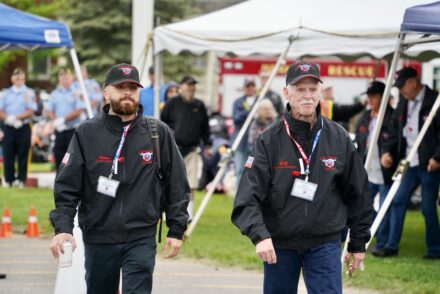 William Stickney, U.S. Army, 1963-1965 – Vietnam
William Stickney, U.S. Army, 1963-1965 – Vietnam
Bill was drafted, and three brothers also served. Two in the Army and one in the Navy.
After Bill was inducted in Albany, he reported to Fort Dix for basic and AIT training. Bill was dispatched as a Heavy Vehicle Driver and joined the motor pool.
Deployed to Germany, Bill drove a tanker delivery traveling on the Autobahn. With speeds of 35 mph, other travelers behind him weren’t happy and couldn’t pass. Other drivers altered equipment to get speeds up to 50 mph, but Bill wasn’t risking a court martial. On alert, Bill spent 24 hours loaded and ready to go but was not dispatched.
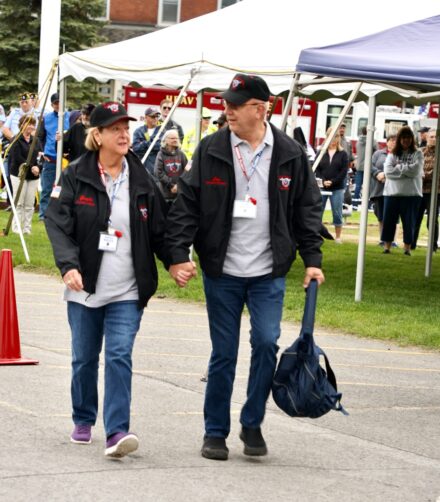 Lewis Wager, U.S. Navy Seabees, 1970-1975 – Vietnam
Lewis Wager, U.S. Navy Seabees, 1970-1975 – Vietnam
Lew received a draft notice and completed basic training at Great Lakes Naval Station and advanced training at Davis Ville Naval Construction Battalion Center as an equipment operator. Lew was assigned to the Gulfport Navy Construction Battalion at ground zero as clean-up from Hurricane Camille was still in process. The base was the largest storage site in the U.S. for Agent Orange. At Kaden Air Force Base and Camp Shields, Lew trained with the Marine Corps. Returning to Gulfport, Lew opened his doors, cooking for all who couldn’t go home for Christmas. After 6-years with the Seabees, Lew won’t step foot on a ship traveling by air.
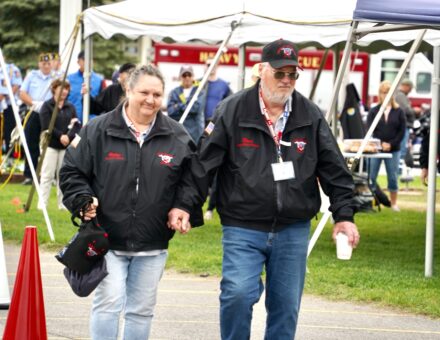 David Wentzel, U.S. Air Force, 1979-1999 – Desert Storm
David Wentzel, U.S. Air Force, 1979-1999 – Desert Storm
After basic training at Lackland Air Force Base, Dave went to tech school at Sheppard Air Force Base in Aircraft Structural Maintenance. In the Michigan winter, the entire shop got canoes. They all fell into the water, built a fire to dry off, and returned to their canoes. Dave was sent to a Wyoming missile base and then stationed at Plattsburgh Air Force Base, performing inspections, painting, and equipment maintenance. Dave enjoyed a year in Italy, going to remote towns and driving the biggest trucks on the road without knowing where they were going. Dave’s next stop was in Las Vegas. Dave retired from McGuire Air Force Base. Dave received numerous medals and commendations for his 20 years of service to our Country.
On a side note, Dave and Helen fostered 11 children and currently have 3 babies. Tomorrow, they are going to Boston for treatment of a little girl who has a head tumor. Please join me in thanking this caring couple for their dedication to children.
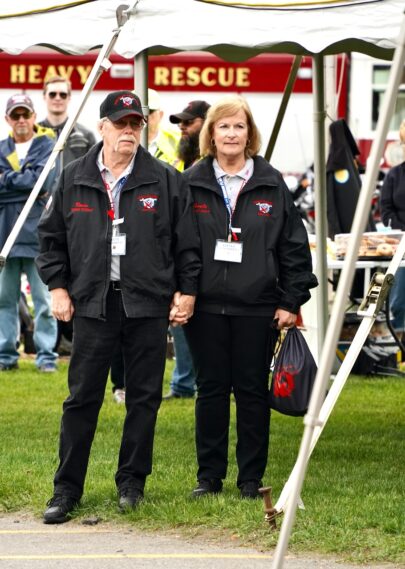 Kevin Woodruff, U.S. Air Force, 1973-1977 – Vietnam
Kevin Woodruff, U.S. Air Force, 1973-1977 – Vietnam
Inducted in Syracuse, Kevin completed basic training at Lackland Air Force Base, followed by tech school and AIT training in Aircraft Maintenance at Chanute Air Force Base. Assigned to Travis Air Force Base, upon arrival, Kevin broke his ankle, and it did not heal properly. Waking up after anesthesia, the Squadron Commander and First Sergeant told Kevin he was listed as AWOL, a court martial offense. Looking at the expression of Kevin’s terrified face, they could not contain their laughter.
Due to the severity of Kevin’s injury, he couldn’t continue his Aircraft Maintenance position and was reassigned to the Parts Department until his discharge.
Posted: May 20th, 2024 under Adirondack Region News, City News, Community Events, General News, Northern NY News, Peru/Regional History, Veterans' News.
